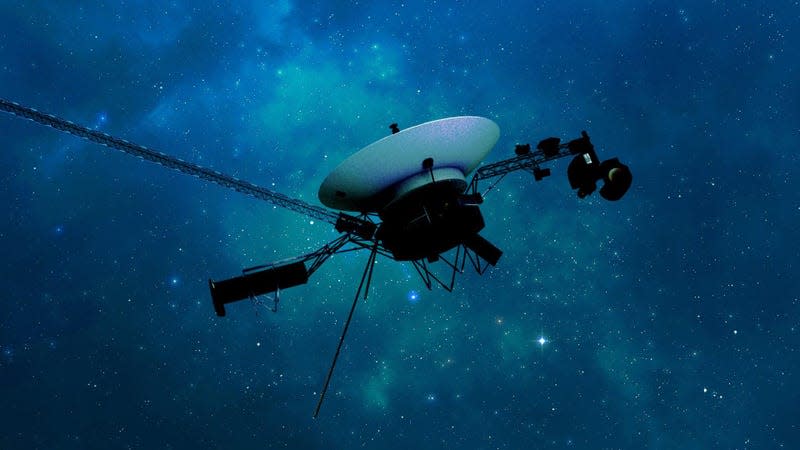NASA's Voyager 1 Is Finally Making Sense After Months of Transmitting Gibberish

The Voyager 1 spacecraft returned usable data for the first time in more than five months, giving hope for the 46-year-old mission to finally be able to resume its normal operations.
NASA’s favorite interstellar probe transmitted data about the health and status of its onboard engineering systems to mission control on Saturday, the space agency announced. That’s great news for the mission, and the next step is hopefully for Voyager 1 to begin returning science data again.
The last time Voyager 1 sent readable science and engineering data back to Earth was on November 14, 2023. Afterwards, the spacecraft was receiving commands, but talking back to Earth in unusable gibberish. The storied spacecraft is exploring the outermost edge of the Sun’s domain, combining its observations with data from newer missions to get a better understanding of how the heliosphere interacts with interstellar space.
In March, the team at NASA’s Jet Propulsion Lab (JPL) pinpointed the cause behind Voyager 1's nonsensical data: a single chip responsible for storing part of the affected portion of the spacecraft’s flight data system (FDS) memory.
FDS collects data from Voyager’s science instruments, as well as engineering data about the health of the spacecraft, and combines them into a single package that’s transmitted to Earth in binary code. Since the glitch, however, the mission has been sending data in a repeating pattern of ones and zeroes.
Voyager 1 is 15.14 billion miles away, which makes repairing it that much more complicated. The engineers at JPL knew that they couldn’t fix the chip, but they could try to place the affected code elsewhere in the FDS memory.

Instead of selecting a single location to hold all of the affected code, the team came up with a plan to divide it into sections and store those sections in different places in the FDS. On April 18, the mission team singled out the code responsible for packaging the spacecraft’s engineering data and sent it to its new location.
Two days later, the engineers heard back from the Voyager 1 spacecraft. It takes around 22.5 hours to send a radio signal to the spacecraft, and another 22.5 hours to receive one back.
Over the coming weeks, the Voyager 1 team will relocate the other affected portions of the software to different parts of the FDS memory, including portions related to the mission’s science data.
Voyager 1 launched in 1977, less than a month after its twin probe, Voyager 2, began its own journey to space. The probe ventured into interstellar space in August 2012, becoming the first spacecraft to leave the heliosphere. The twin spacecraft are the longest-running missions in history, and aside from a few communication glitches, the pair are doing pretty well for their age.
For more spaceflight in your life, follow us on X and bookmark Gizmodo’s dedicated Spaceflight page.

